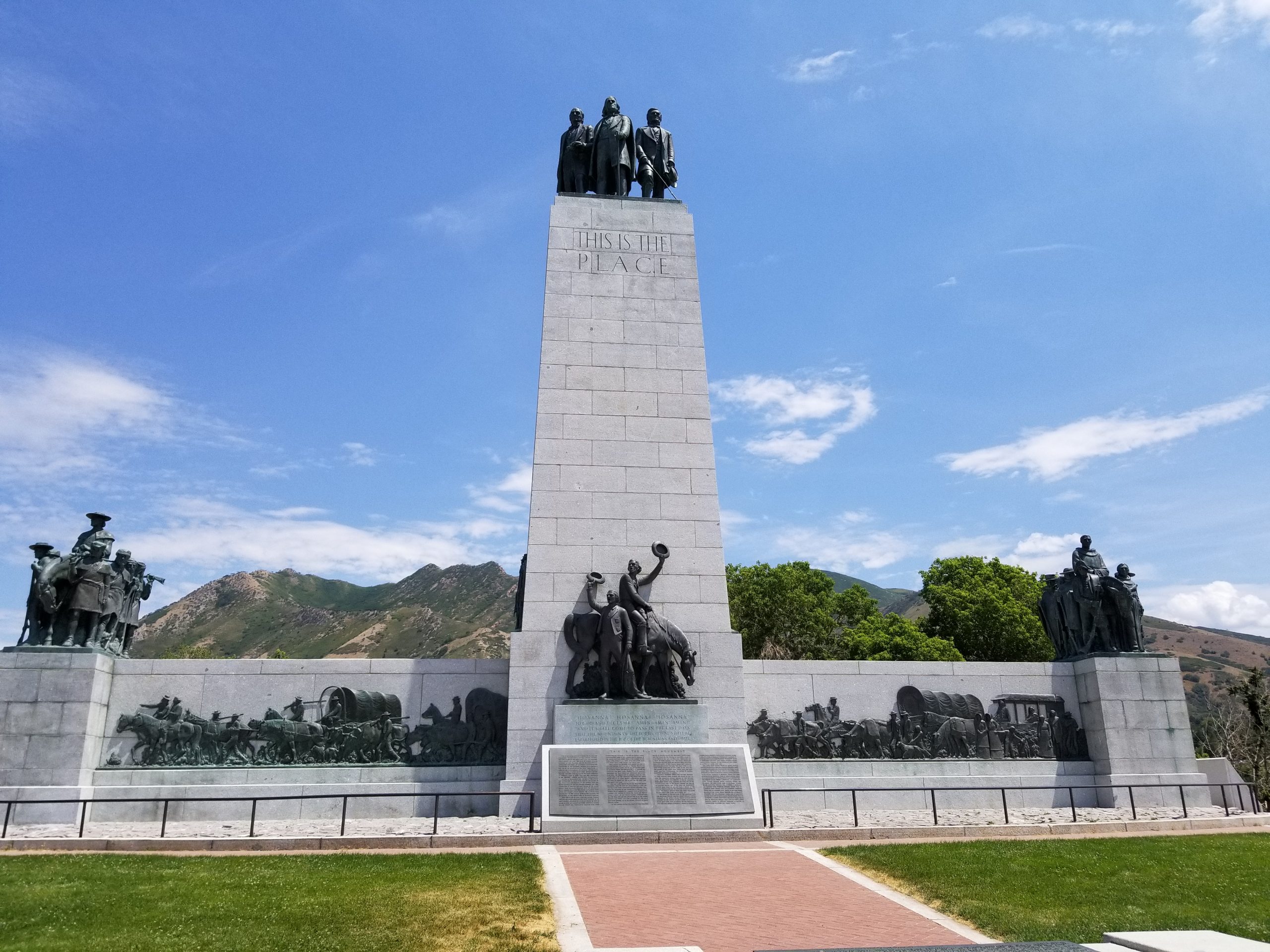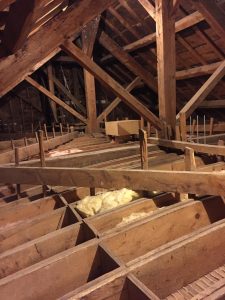write-up by Alan Johnson
Placed by: Daughters of the Utah Pioneers, No. 97
GPS Coordinates: 37° 6′ 29″ N, 113° 34′ 58″ W
In 1863, Orson Pratt, Amasa M. Lyman, Erastus Snow, apostles of the Church of Jesus Christ of Latter-day Saints, laid the cornerstones 18 months after pioneers arrived in St. George. Truman O. Angell, Sr., Architect. Miles Romney, Supt. Of Construction, assisted by Edw. L. Parry, Archibald McNeil, Samuel Judd, Wm. Burt, David Milne and many others. Peter Neilson gave $600 cash. Tower capstone laid Dec. 1871. Costing over $110,000, it was dedicated 14 May 1876 by Brigham Young Jr.
Brigham Young’s purpose in building this tabernacle was to provide an ornament to the city. It’s 3 foot thick basement walls of hand-cut limestone bear individual stonecutter marks. Roof trusses were hand-hewn and the twin spiral staircases with balust-rades were also hand-carved. The ceiling and cornice work were locally cast, but the 4-faced clock was made in London. Started in 1863, the building was completed in 1871.
Extended Research:
In the fall of 1862, Brigham Young asked the settlers of southern Utah to build a tabernacle, stating that it “will be not only useful but also an ornament to your city and a credit to your energy and enterprise.”[1] Asking the settlers of St. George to begin building a tabernacle within a year of their arrival meant that President Young intended this settlement to be permanent. Brigham Young remained intimately involved in the planning and construction of the St. George Tabernacle until its completion and provided encouragement and needed resources to the workers. St. George residents built the tabernacle while they were living in tents, sleeping on the ground, and trying to establish their own farms and businesses.
Brigham Young served as the initial architect of the building, in collaboration with Erastus Snow, leader of the St. George settlement. The two exchanged several letters in 1862 and 1863 discussing the type of building to be constructed, materials, dimensions, and general style. The decision to construct the building from sandstone came from these letters.
In form, the St. George Tabernacle is a typical New England meetinghouse in the Colonial-Georgian style. What makes it different from other New England meetinghouses is its monumental size and sandstone exterior. The St. George Tabernacle construction was primarily a public works project rather than being financed by individuals or private companies. Workers were paid with Church tithing funds and settlers from all over southern Utah Territory either worked on the building or provided goods to aid in its construction. The tabernacle was a public works project in part to stimulate the local economy. There were not very many business opportunities in early St. George, and many of the tabernacle construction workers were also farmers struggling to raise enough crops to support a family.
St. George residents began meeting in the tabernacle as soon as the building was sufficiently completed. Starting in 1869, many meetings were held in the basement as work continued on the main floor. Meetings were then held on the main floor while finishing work was completed in the basement. Meetings then moved back to the basement while finishing work was done on the main floor. The Saints met regularly in the unfinished building and were overjoyed when it was finally completed and dedicated on May 14, 1876, just a year before the completion of the St. George Temple. The St. George Tabernacle was used as a meeting place for St. George Stake meetings, ward functions, and community events through the 1970s. The Church undertook a restoration and preservation project on the tabernacle in 1992, which solidified the tabernacle’s place as a Church historic landmark.[2]
[1] Brigham Young to Erastus Snow, Oct. 1, 1862, St. George Stake Manuscript History, Church History Library.
[2] This content is pulled largely from internal training materials produced by the Church History Department of The Church of Jesus Christ of Latter-day Saints.
For Further Reference:
Primary Sources:
Minutes of meetings held in the upper room of St. George Tabernacle, 1872 December 28-29, Brigham Young office files; Journals, 1832-1877; Journals, Minutes, and Itineraries, 1844- 1877, Church History Library, The Church of Jesus Christ of Latter-day Saints., Call Number: CR 1234 1.
Secondary Sources:
West, Ester. Counting on faith: the story of the St. George Tabernacle windows /retold and illustrated by Ester West. Church History Library, The Church of Jesus Christ of Latter-day Saints, Call Number: M287.2 W516c 2015.
https://www.lds.org/locations/st-george-tabernacle?lang=eng&_r=1















